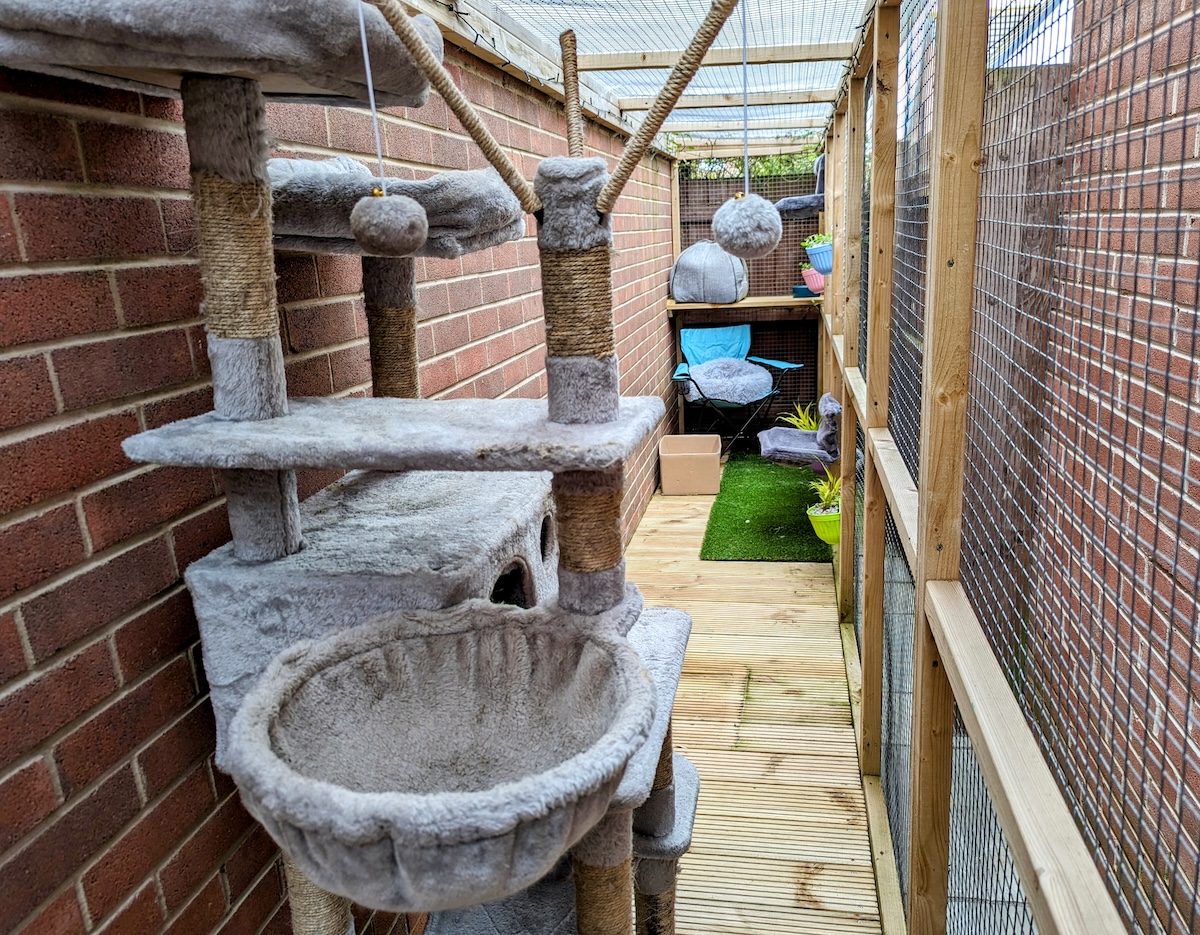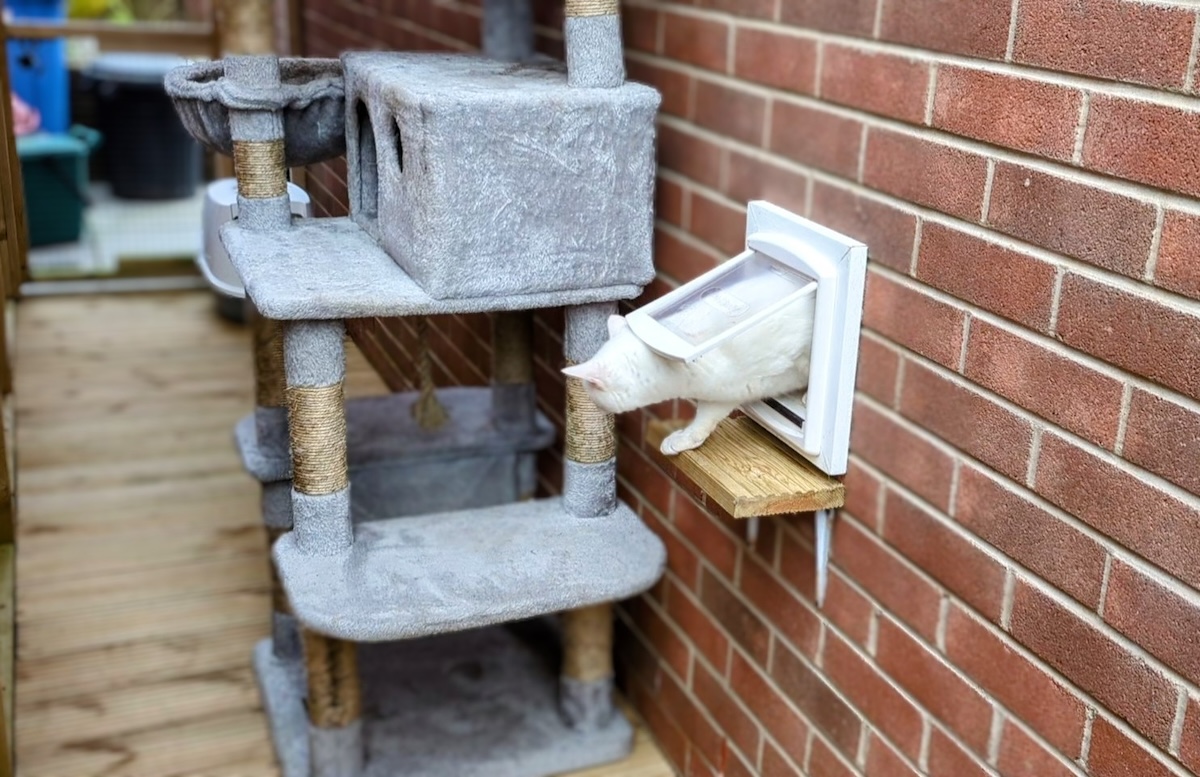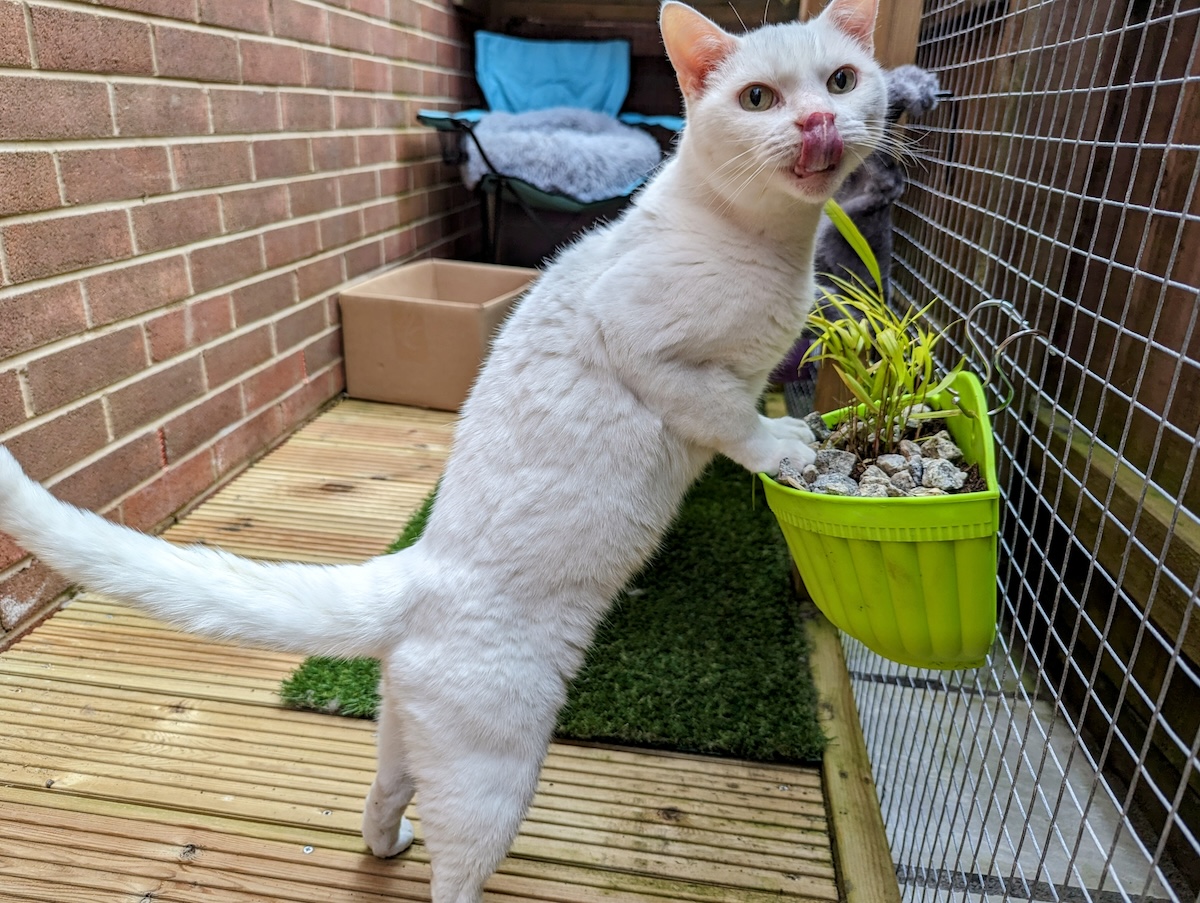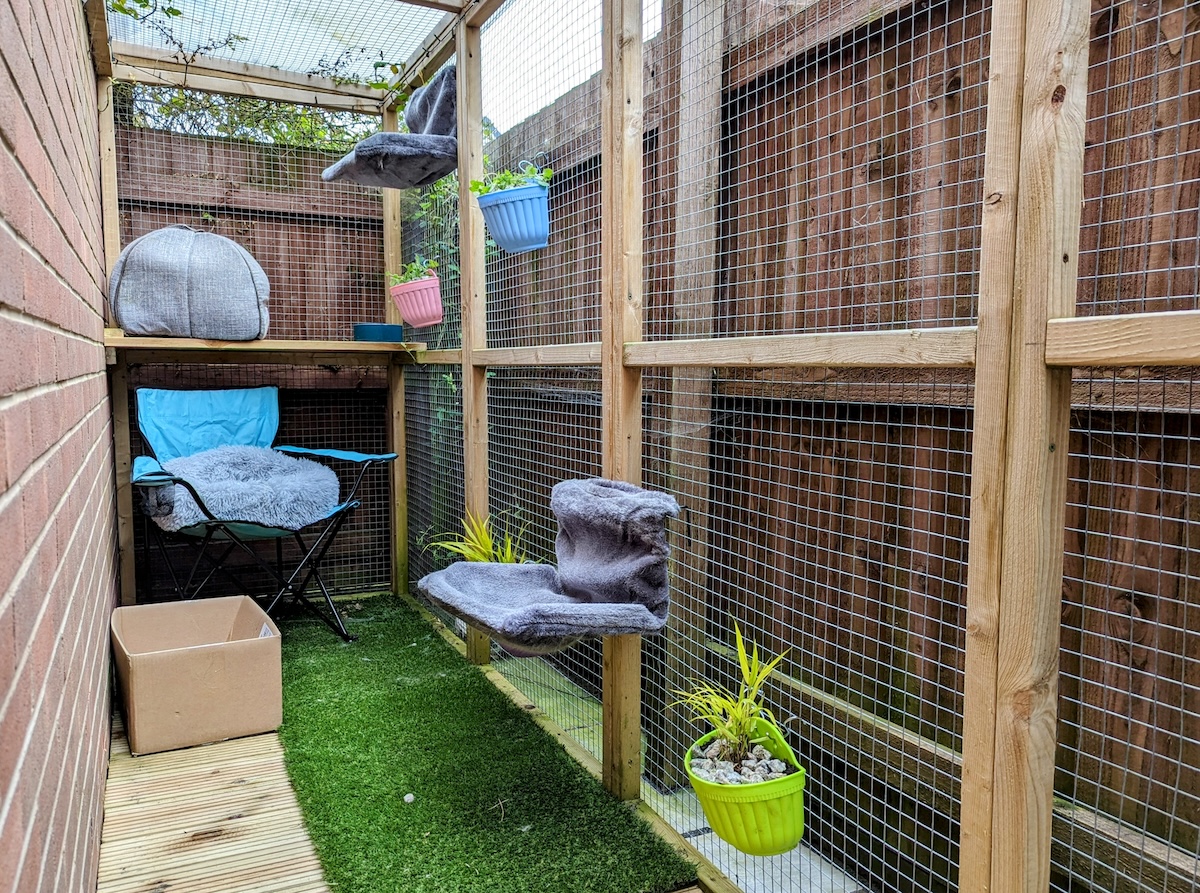Hi, I’m Dr. Karyn! Read my introduction to learn more about me and meet my five hilarious cats: Clutch, Cyril, Alex, Zelda, and Zazzles.
As you may be aware, I am originally from Australia, but have been living in the UK for just over a decade. Growing up in Australia, I always had cats, and when I was young, those cats always lived mostly outdoors. By the mid 1990s, it was becoming more and more evident just how devastating an impact cats were having on Australian wildlife. Cats were first introduced in the early 1800’s, into an ecosystem that did not previously contain a predator of their caliber. The feral cat population is estimated to fluctuate between one and four million, and kills around six million native animals per day, threatening the survival of over 100 animal species. And we’re not just talking about stray cats here; these are wild, compact killing machines.
By the time I was in my late teens, letting your cat roam outside, particularly at night, had become highly frowned upon, and there is legislation regarding cat curfews being implemented in most states of Australia. So for me, keeping my cats safely indoors became normal practice; I invested in an outdoor cat enclosure to allow my cats to safely have a taste of the great outdoors, protecting them from the hazards of life in suburban Queensland, whilst keeping the wildlife safe. My two cats grew up knowing that a harness and lead were just a normal part of going exploring, and it was easy to find a wide range of equipment and accessories to accommodate their restricted outdoor excursions.

When I moved to the UK, I was therefore a bit taken aback when I was informed by many cat owners that keeping cats indoors was considered “cruel.” In England, cats have been part of the ecosystem for at least a millennia, if not longer, so the issues faced in Australia do not apply. Still, the number of injuries from dog attacks, cat fights, and road traffic accidents I saw in practice, not to mention the number of cats that don’t survive being hit by a car, was enough to convince me that an outdoor lifestyle in built up areas was not the safest option for my feline family members. When it comes to looking after cats, a large part of that responsibility is keeping them safe. A cat might want to go running to the field they can see from the window, but they are likely unaware of the busy roads, large dogs, and multitude of cats that stand between it and them.
In veterinary practice, I see many cats suffering from stress-induced Feline Lower Urinary Tract Disease (FLUTD), and I believe that feline population density is largely to blame. In crowded suburbs, you often have dozens of households with cats, all occupying a pretty small area, meaning there is a lot of competition for territory. This invariably leads to fighting and stress.
So despite it being unpopular in this country, I have elected to keep my five felines safely indoors, but that doesn’t mean that they don’t get to go outside…
Most cat lovers will be aware of the importance of environmental enrichment; providing scratching posts, cat trees etc to allow cats to jump, climb, and observe from on high, and there are plenty of those in my home. What was more difficult to find, however, were cat enclosures. Although there are plenty of people that share my view about keeping cats safely indoors, we are a minority enough that there are few items available to buy in the UK. And so, my husband and I stopped looking to buy a cat enclosure, and built one instead.
Using panels from a chicken pen, we have built an enclosure that runs down the side of our house, making use of an area that was otherwise a waste of space. There is a large secure door at one end, but the cats’ access is through a cat door strategically tucked behind one of the lounge chairs. The comings and goings through this feline portal was of great interest to our two chihuahuas initially, but they seem to have accepted the sound of the cat flap as part of the normal soundscape of home.

Our catio has a translucent roof that keeps the rain out but allows sunshine in. There is a scratching post, access to cat grass, and a number of bedding options. I have hung a few little planters containing some Nepeta sp. (aka Catnip plant) and some Japanese Forest Grass (Hakonechloa sp.). This is a cat-safe grass that has soft green leaves that most cats will enjoy munching on. There are lots of different grasses you can offer your cats, but make sure you know which species you are using, and don’t let them over-indulge, as too much grass can cause stomach upset.
I have strategically placed the hanging pots at heights and locations that the cats can reach but not easily sit on – I don’t want them turning them into a toilet! The addition of some stones on top of the soil also helps with this, and makes them look pretty!

Initially, only Clutch was brave enough to explore the outdoor sanctuary, but over time, Zelda and Cyril have become regular visitors (though I was a bit worried for a moment that Cyril would struggle to fit through the tunnel), and Alex and Zazzles are becoming more and more interested in the magic portal behind the sofa. What surprised me most is how often Clutch and Zelda would spend time in the catio during winter, seemingly unperturbed by the chilly temperatures!
Even if you can’t find the perfect cat enclosure, there are lots of different ways to make the space you have, and the equipment you can find, work for you and your home. Whether you share your home with a feline or five, keeping them safe should be your top priority. But it’s nice to know that if you keep your cat indoors, they can still enjoy a taste of the outside world.



